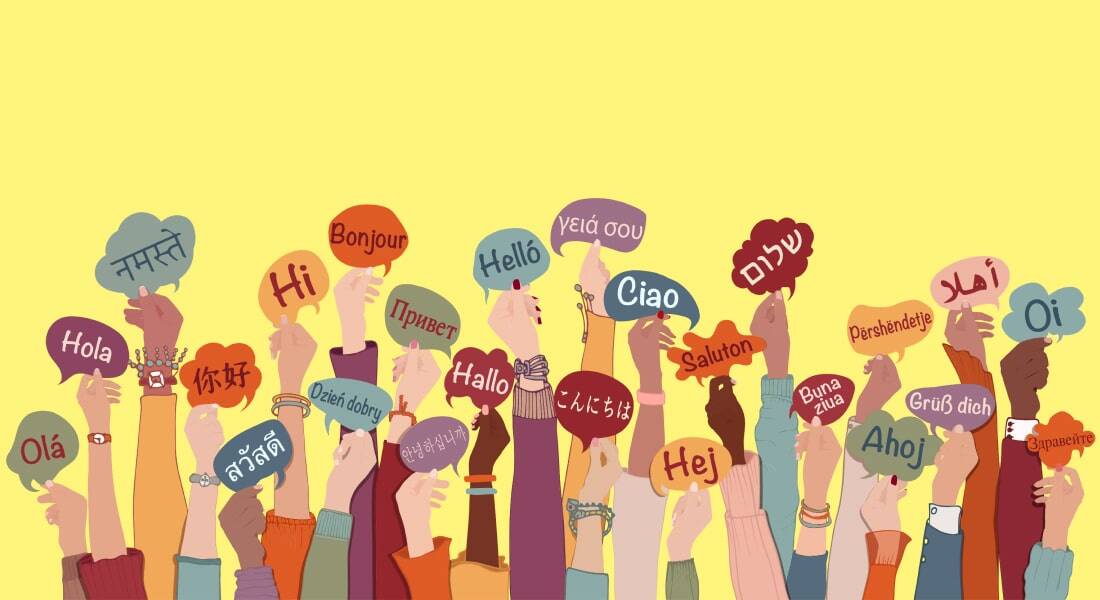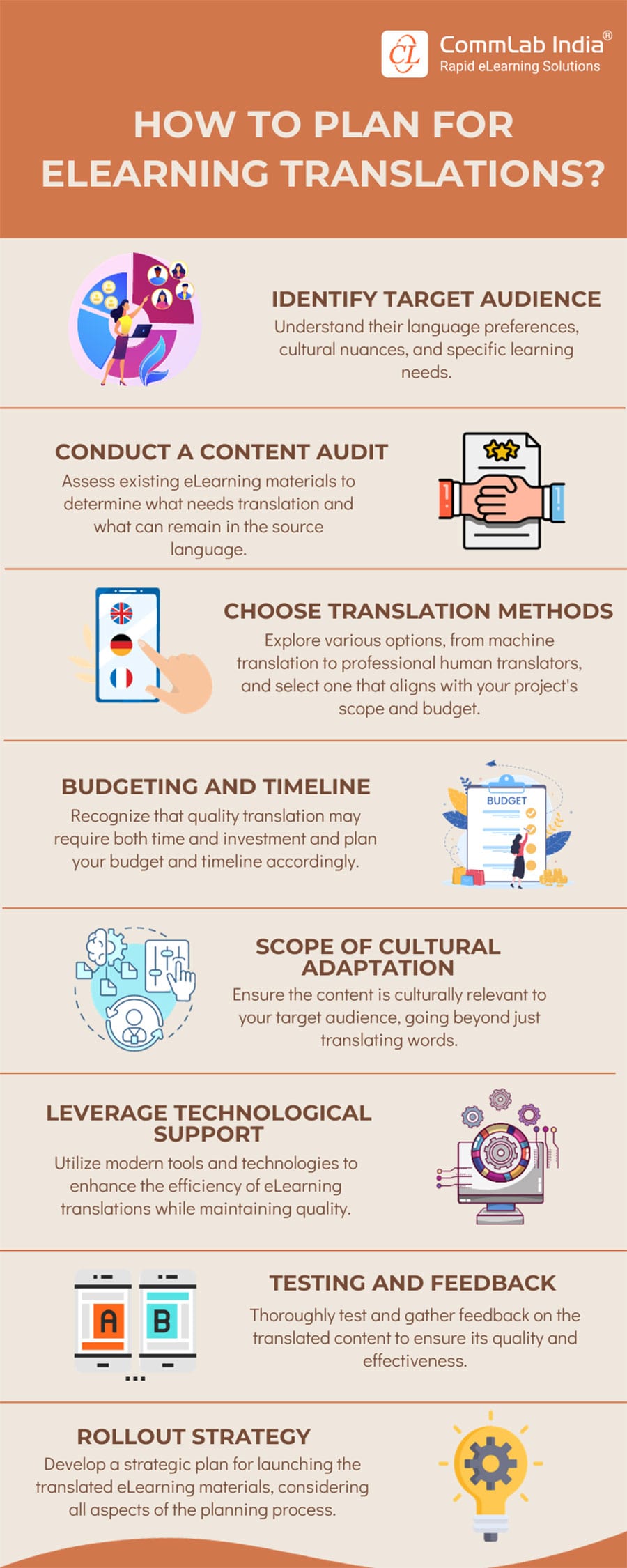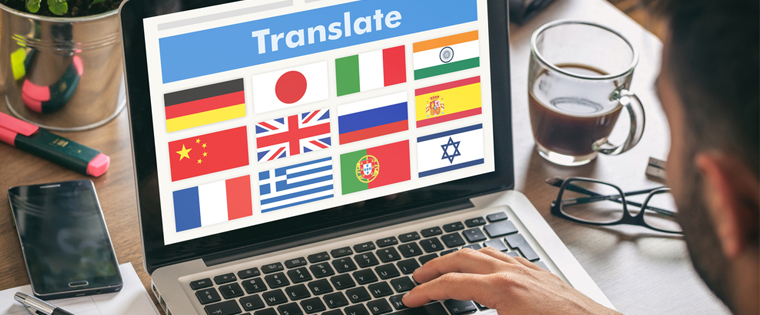The Future of Corporate Training is Multilingual with eLearning Translations!

In today’s connected world, eLearning has made it easier than ever to deliver employee training and development across borders. But here’s the thing—if you’re not translating your eLearning content, you might be leaving a big part of your learners behind. Reaching learners who speak different languages isn’t just important; it’s essential for truly effective training.
→ Download eBook: Corporate L&D Trends 2025 – Get the View from the Trenches
Table Of Content
- Why the Upsurge in eLearning Translations?
- What are the Benefits of eLearning Translations in Today’s Business Space?
- What are some Common eLearning Translations Challenges?
- What are the Popular Trends Shaping the World of eLearning Translations?
- How Can You Save Time and Money with eLearning Translations?
- How to Plan eLearning Translations for Global Learning?
- An Unmissable Success Story!
Why the Upsurge in eLearning Translations?

The digital revolution has transformed the way corporate training is delivered. With the rise of eLearning platforms, organizations can reach global learners regardless of geographical location. This has led to an increased need for translating eLearning content to cater to learners from different linguistic backgrounds. Additionally, with globalization, companies are no longer confined to their home markets. They operate in diverse regions, each with its unique language and culture. This has made it imperative for businesses to communicate with employees, partners, and customers in their native languages, driving the demand for eLearning translations even further.
What are the Benefits of eLearning Translations in Today’s Business Space?
1. Expanded Global Reach
Translating eLearning content enables organizations to reach global learners, breaking down language barriers and fostering inclusivity. This helps organizations augment their reach across the world and make a mark in the global market.
Want to reach learners around the world? Discover how eLearning translations can break language barriers and create a truly global learning experience!
2. Enhanced Learning Experience
Learners grasp concepts more effectively when presented in their native language, leading to improved comprehension and retention. They feel valued when training materials are available in their preferred language. Engaged employees are more likely to apply what they’ve learned, leading to better performance.
Over 30% of employees globally prefer training content in their native language.
3. Compliance and Regulatory Requirements
Many industries, such as healthcare, finance, and legal, have strict compliance regulations. They require training materials to be available in multiple languages to comply with local regulations and standards. Translating eLearning content ensures that employees across different geographies receive consistent and compliant training.
4. Competitive Advantage
Organizations that offer multilingual eLearning experiences gain a competitive edge by appealing to diverse markets and attracting international talent. It demonstrates cultural sensitivity, fosters inclusivity, and enhances the overall learning experience.
5. Cost-Effectiveness
Investing in eLearning translations upfront may seem like an expense, but it pays off in the long run. It reduces the need for costly in-person training sessions and ensures consistent messaging across the organization.
What are some Common eLearning Translations Challenges?
The world seems to become smaller all the time. Many organizations have employees working all around the world. Plenty of products are shipped from one part of the world to the other, on a daily basis. Sales representatives need to sell and service them in different locations. This makes it necessary to train every person involved in the process – right from procurement to after-sales service – in the languages they are comfortable with. And this is where eLearning translations come in handy!
But there are a few challenges too:
- How do we ensure that team members around the globe learn effectively?
- How do we increase the accuracy of content without relying on an in-person instructor or translator?
- When a very small community of learners prefers a particular language, how is it possible to deliver content to them?
- Is it easy to get classroom trainers who are native speakers of the languages your employees prefer?
- Do we have to deal with multiple eLearning outsourcing vendors for translations?
eLearning translations is a one-stop destination for your content to be translated into your preferred languages.
Want to know how to make it seamless? Take a look at this infographic for more information.
What are the Popular Trends Shaping the World of eLearning Translations?
1. Artificial Intelligence (AI) and Machine Learning (ML)
The rapid advancement of AI translation tools is one of the most remarkable trends in the world of eLearning translations. AI-powered translation tools are revolutionizing the eLearning translation process by automating tasks such as language detection, text translation, and quality assurance. These tools leverage machine learning algorithms to improve accuracy and efficiency over time. AI-driven tools can translate content faster, maintain consistency, and adapt to context.

2. Multimedia Translation
With the increasing use of multimedia content in eLearning, multimodal translation solutions are gaining traction. Multimodal translation combines text, images, and audio to create a holistic learning experience. These tools can translate text, audio, and visual elements simultaneously, providing a seamless learning experience across languages. For instance, subtitles in videos, image descriptions, and voiceovers can all be translated to enhance comprehension.
3. Mobile Translation
As mobile devices become ubiquitous, there is a growing demand for eLearning content that is accessible on mobile devices such as smartphones and tablets. Mobile translation apps and responsive design techniques enable learners to access course materials anytime, anywhere, enhancing flexibility and convenience. Naturally, eLearning translation services will focus on localization needs such as user interface and functionality of the mobile learning applications and platforms.
4. Neural Machine Translation (NMT)
According to a report, the value of the global neural machine translation market was $464.07 million in 2023, which is expected to reach $1,019.62 million in 2030 with a CAGR of 11.77%.
NMT systems utilize deep learning techniques to produce more fluent and contextually accurate translations compared to traditional statistical methods. This technology is particularly effective for complex language pairs as they capture context and develop realistic and fluent translations. NMT-powered translation tools like DeepL and Google’s BERT provide more accurate results than traditional methods, making global communications seamless and benefiting various business domains.
5. Remote Collaboration Tools
Virtual collaboration platforms such as Zoom, Microsoft Teams, and Slack facilitate real-time collaboration among translators, subject matter experts, and project managers, regardless of their location. Cloud-based Translations Management Systems (TMS) streamline communication, project management, and workflow automation, accelerating the eLearning translation process. The centralized hub for glossaries and style guides offered by TMSs is a quick and easy reference for global teams that helps ensure consistency in quality across projects.

Corporate L&D Trends 2025
Get the View from the Trenches
- Win with AI
- Design for the agile workforce
- Unlock scale, volume, quality
- Make an impact
- Much more
How Can You Save Time and Money with eLearning Translations? 10 Tips
1. Leverage Translation Memory Tools
Harness the efficiency of Translation Memory (TM) tools in corporate training translations. These tools store prior translations, swiftly retrieving recurring phrases or terms. By reusing existing content, they ensure a consistent language across eLearning courses, maintaining a unified corporate voice. Beyond consistency, Translation Memory expedites the entire translation process, turning it into a nimble, agile endeavor. Imagine a seamless learning experience where materials are not only linguistically cohesive but also delivered with unmatched efficiency. In corporate training, where time is of the essence, leveraging TM tools becomes a strategic move towards enhanced quality and unified linguistic precision.
2. Standardize Terminology
Establish a robust glossary and terminology guide. Standardizing terminology ensures a unified language across eLearning courses, reducing ambiguity and streamlining the translation workflow. This not only enhances precision in language but also helps in maintaining a cohesive and professional tone.
3. Prioritize Content for Translation
Strategic prioritization is key. Identify and prioritize content based on its impact and relevance to learning objectives. Focusing on high-priority materials not only expedites the translation process but also ensures that crucial information reaches the target learner group swiftly.
4. Utilize Authoring Tool Features
Choose an eLearning authoring tool equipped with translation-friendly features. Tools like iSpring Suite offer an intuitive interface that simplifies the translation process. Seamless support for multiple languages ensures an efficient workflow, saving both time and effort during the course development cycle.
5. Collaborate with Native Speakers
Engage native speakers in the translation process. Their cultural and linguistic insights are invaluable, ensuring not just accurate translations but also localization so the content resonates with the nuances of the target learner group. Native speakers contribute to a nuanced and contextually relevant final product.
6. Invest in Machine Translation
Intelligently integrate machine translation into your corporate eLearning translation strategy. While human review remains crucial, these tools efficiently accelerate initial drafts. By harnessing machine translation in the early stages, human translators can dedicate their expertise to refinement, creating a harmonious synergy of automation's efficiency and human precision. This judicious approach not only speeds up the process but also ensures a polished and accurate final outcome for your corporate eLearning content.
7. Batch Process Content
Efficiency in eLearning translation reaches new heights with batch processing. This strategic approach involves grouping similar content for simultaneous translation, enabling linguists to work on multiple segments concurrently. The result is a significant reduction in the overall turnaround time without compromising the quality of translations. This method not only expedites the process but also enhances efficiency in handling large volumes of eLearning content.
8. Opt for Cloud-Based Translation Platforms
Embrace the future of translation with cloud-based platforms that foster seamless collaboration. These innovative platforms offer real-time updates and version control, enabling translation teams to work together collaboratively and efficiently. The cloud-based approach enhances accessibility, allowing teams to work from different locations while maintaining a centralized hub for project management. This not only streamlines collaboration but also ensures a more agile and responsive approach to eLearning translation projects.

Corporate L&D Trends 2025
Get the View from the Trenches
- Win with AI
- Design for the agile workforce
- Unlock scale, volume, quality
- Make an impact
- Much more
9. Implement Continuous Review Cycles
Incorporate a dynamic approach to eLearning translation by implementing continuous review cycles. This iterative process involves regularly revisiting and updating translated content based on valuable feedback. This ensures not only the sustained accuracy of the material but also its ongoing relevance to evolving learning objectives. The continuous review cycle becomes a cornerstone for maintaining high-quality translations that align seamlessly with the dynamic nature of learning content, providing a perpetual enhancement loop for optimal eLearning experiences.
10. Automate Repetitive Tasks
Elevate the efficiency of eLearning translation endeavors by embracing automation for repetitive tasks. This strategic move involves automating processes such as formatting and file conversions, accelerating the translation timeline while minimizing the risk of errors. By entrusting routine tasks to automated systems, translators can redirect their focus to value-added activities, optimizing both time and resources. The result is a streamlined and error-resistant translation process, where automation complements human expertise for a harmonious blend of precision and efficiency in eLearning content creation.
How to Plan eLearning Translations for Global Learning?
Expanding your eLearning content to reach global learners requires more than just translation—it demands careful planning to ensure the material is effective and culturally relevant.
Here's how to approach eLearning translations the right way.
An Unmissable Success Story!
Faced with the challenge of translating a Safety Protocols eLearning course into 18 languages within just two months, we stepped up with an agile development approach. With precision, collaboration, and strategic use of tools, we ensured a seamless, responsive learning experience for global learners.
Want the inside scoop on how we made it happen and the game-changing results? Dive into the full case study now!
Wrapping up!
The global workforce is becoming more diverse, and staying ahead means embracing multilingual corporate training solutions. With eLearning translations, companies can ensure inclusivity, enhance employee engagement, and drive better results across the world. Ready to explore how corporate L&D is evolving? Discover the top trends shaping corporate learning in 2025 and beyond and take your employee training and development strategies to the next level. Don't miss out—download eBook now!







![Want More From Training? Focus on E-learning Course Translations! [Infographics]](https://blog.commlabindia.com/hubfs/Imported_Blog_Media/elearning-translations-at-low-cost-.jpg)
